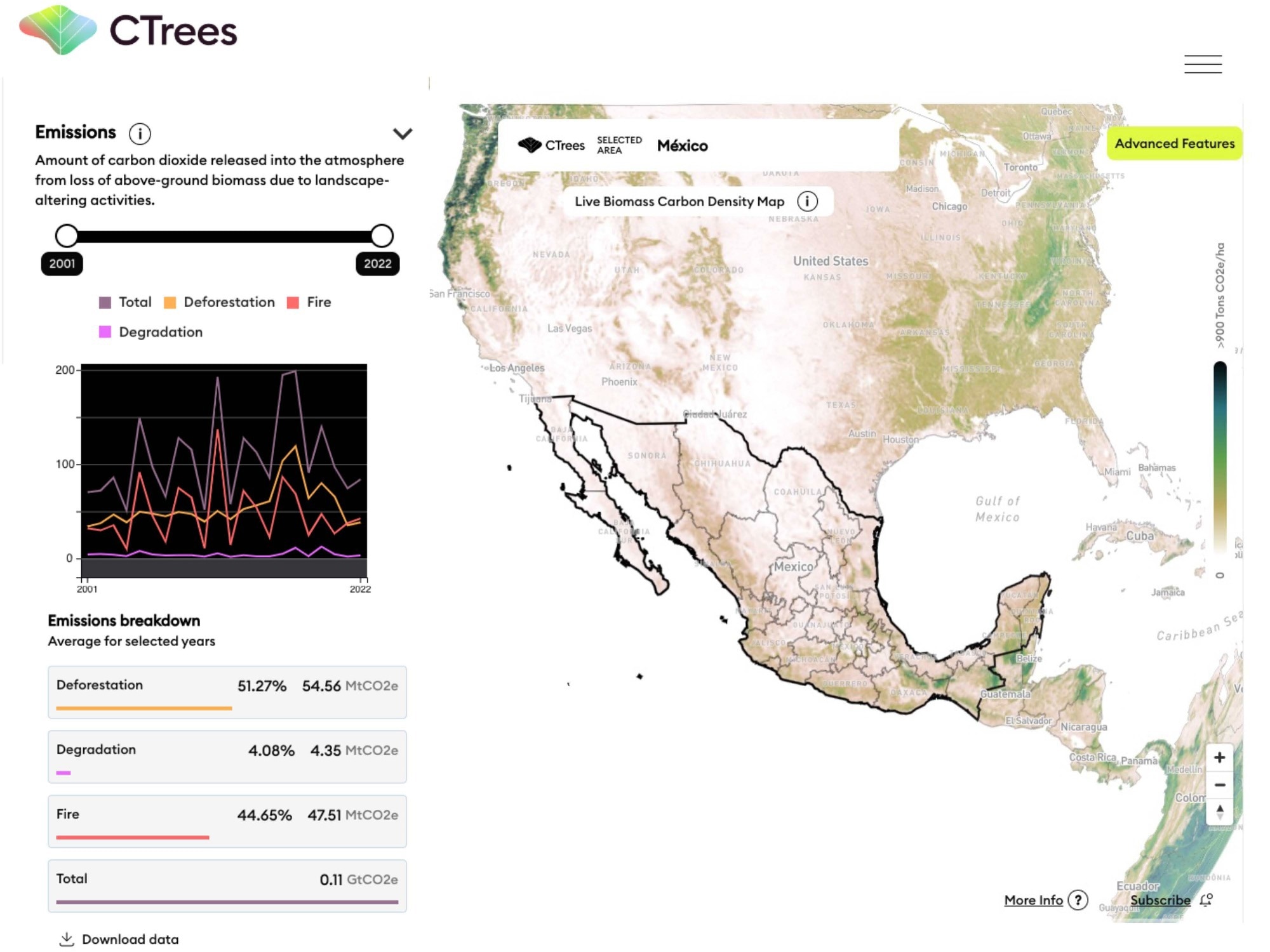Today, non-profit CTrees updated its carbon inventory statistics and maps for all forest and non-forest lands in every country around the world. This independent carbon data can now be used by anyone to measure, report, and verify carbon – including countries heading into COP28 negotiations. With 2022 data now available, CTrees’ version 2.0 of the free Jurisdictional MRV tool offers the most up-to-date and comprehensive global data on land carbon emissions inventories available from any source.

Image Credit: CTrees
The version 2.0 of the tool includes an interactive carbon map and charts with historical data on carbon stocks, emissions, and removals from all vegetation on land – forests, grasslands, wetlands, mangroves, savannahs, shrublands, tundra, and more. The data is produced by leading scientists applying peer-reviewed, AI-enabled methodologies in a groundbreaking cloud platform that integrates data from a variety of sources, including satellite imagery from optical and radar satellites, air and space-based lidar, and forest inventory data.
The update comes at a critical time as global leaders convene in Dubai for COP28 to discuss the results and implications of the first-ever Global Stocktake, an international evaluation of the Paris Agreement goals. With new jurisdiction-level features, the tool gives everyone the power to independently verify the findings of the Stocktake, help countries meet their nationally determined commitments (NDCs), and make crucial decisions for what policies are needed going forward.
Dr. Sassan Saatchi, Co-founder and CEO of CTrees said: “The negotiations taking place over the next weeks at COP28 require current, accurate, and comparable data to ensure we’re making the strides needed to stay beneath the 1.5°C threshold. This tool and its latest update will continue to aid governments and communities who need to understand the health and carbon sequestration potential of their forests to ensure their policies and practices are meeting the needs of the world.”
Crucially, over 70% of countries have made commitments under the Paris Agreement to reduce net emissions through submitted NDCs that include the forest sector. These countries are encouraged to take action to prevent long-term carbon losses and to enhance carbon stocks through improved management toward quantifiable climate mitigation targets.
Dr. Thelma Krug, Vice Chair of the IPCC for the Sixth Cycle and former researcher at the National Institute of Space Research (INPE) in Brazil, said: "Reducing deforestation and restoring ecosystems are relevant and cost-effective land-based activities that contribute to climate change mitigation and biodiversity. But too few countries have the accurate data they need to design policies, target their investments, and verify their progress. This data levels the playing field for all countries to have access to cutting-edge data resources to support their efforts to implement natural climate options.”
CTrees’ JMRV tool gives countries the tools to measure and verify concrete, quantifiable goals on forest protection and nature-based solutions. Its use of machine learning and sophisticated satellite imaging provides a more accurate and frequently available alternative to what forestry ministries currently can do alone when tracking carbon.
Findings from the 2022 data include:
● Deforestation across the tropics remained high at more than 4.5 gigatons of CO2e and increased slightly in 2022 by about 5%.
● However, there were significant reductions in deforestation in key regions:
○ Indonesia’s emissions from deforestation and degradation continued to drop in 2022 by about 56% and 87%, respectively, following the National Low Carbon Development and One Map policies implemented starting in 2016.
○ The Congo Basin in Central Africa also experienced lower emissions from deforestation and degradation by more than 10%.
○ In Latin America, emissions did not change significantly throughout 2022 but started to decline in 2023, mostly due to Brazil’s new regulations. CTrees’ land use change alert platform (LUCA) shows more than a 45% reduction in deforestation in Brazil as a result of the new government policies.
● Globally, the removal of carbon dioxide by forests remains stable, with some variations across countries.
○ The US carbon sink improved significantly (more than 30%) in 2022 as compared to 2021, largely due to the reduction of wildfires in the western states.
○ During the same period, Canada’s net forest carbon sink continued to decline because of droughts and wildfires.
New features in version 2.0 of the JMRV tool include:
- 2022 data for all statistics
- 22 years of historical annual data, from 2001-2022
- Calculate averages for any selected period
- Download function for CSV data and PNG image files for each chart
- 2022 map of aboveground carbon stocks (replacing 2021 version)
- Data on area of forest and non-forest for each jurisdiction
- New web interface